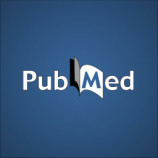2015 Apr 3;290(14):8711-21. doi: 10.1074/jbc.M114.618447. Epub 2015 Feb 9.
Elmes MW1, Kaczocha M2, Berger WT3, Leung K1, Ralph BP1, Wang L1, Sweeney JM1, Miyauchi JT4, Tsirka SE4, Ojima I3, Deutsch DG5.
Abstract
 Δ(9)-Tetrahydrocannabinol (THC) and cannabidiol (CBD) occur naturally in marijuana (Cannabis) and may be formulated, individually or in combination in pharmaceuticals such as Marinol or Sativex. Although it is known that these hydrophobic compounds can be transported in blood by albumin or lipoproteins, the intracellular carrier has not been identified. Recent reports suggest that CBD and THC elevate the levels of the endocannabinoid anandamide (AEA) when administered to humans, suggesting that phytocannabinoids target cellular proteins involved in endocannabinoid clearance. Fatty acid-binding proteins (FABPs) are intracellular proteins that mediate AEA transport to its catabolic enzyme fatty acid amide hydrolase (FAAH). By computational analysis and ligand displacement assays, we show that at least three human FABPs bind THC and CBD and demonstrate that THC and CBD inhibit the cellular uptake and catabolism of AEA by targeting FABPs. Furthermore, we show that in contrast to rodent FAAH, CBD does not inhibit the enzymatic actions of human FAAH, and thus FAAH inhibition cannot account for the observed increase in circulating AEA in humans following CBD consumption. Using computational molecular docking and site-directed mutagenesis we identify key residues within the active site of FAAH that confer the species-specific sensitivity to inhibition by CBD. Competition for FABPs may in part or wholly explain the increased circulating levels of endocannabinoids reported after consumption of cannabinoids. These data shed light on the mechanism of action of CBD in modulating the endocannabinoid tone in vivo and may explain, in part, its reported efficacy toward epilepsy and other neurological disorders.
Δ(9)-Tetrahydrocannabinol (THC) and cannabidiol (CBD) occur naturally in marijuana (Cannabis) and may be formulated, individually or in combination in pharmaceuticals such as Marinol or Sativex. Although it is known that these hydrophobic compounds can be transported in blood by albumin or lipoproteins, the intracellular carrier has not been identified. Recent reports suggest that CBD and THC elevate the levels of the endocannabinoid anandamide (AEA) when administered to humans, suggesting that phytocannabinoids target cellular proteins involved in endocannabinoid clearance. Fatty acid-binding proteins (FABPs) are intracellular proteins that mediate AEA transport to its catabolic enzyme fatty acid amide hydrolase (FAAH). By computational analysis and ligand displacement assays, we show that at least three human FABPs bind THC and CBD and demonstrate that THC and CBD inhibit the cellular uptake and catabolism of AEA by targeting FABPs. Furthermore, we show that in contrast to rodent FAAH, CBD does not inhibit the enzymatic actions of human FAAH, and thus FAAH inhibition cannot account for the observed increase in circulating AEA in humans following CBD consumption. Using computational molecular docking and site-directed mutagenesis we identify key residues within the active site of FAAH that confer the species-specific sensitivity to inhibition by CBD. Competition for FABPs may in part or wholly explain the increased circulating levels of endocannabinoids reported after consumption of cannabinoids. These data shed light on the mechanism of action of CBD in modulating the endocannabinoid tone in vivo and may explain, in part, its reported efficacy toward epilepsy and other neurological disorders.© 2015 by The American Society for Biochemistry and Molecular Biology, Inc.
KEYWORDS:
Anandamide (N-Arachidonoylethanolamine) (AEA); Cannabidiol (CBD); Cannabinoid; Cannabinoid Transporters; Endocannabinoid; Fatty Acid Amide Hydrolase (FAAH); Fatty Acid Binding Protein; Lipid Trafficking; Lipid Transport; Δ-tetrahydrocannabinol (THC)
- PMID: 25666611 [PubMed – indexed for MEDLINE] PMCID: PMC4423662 [Available on 2016-04-03]
- Amino Acid Sequence
- Animals
- Cannabidiol/chemistry
- Cannabidiol/metabolism*
- Carrier Proteins/chemistry
- Carrier Proteins/physiology*
- Dronabinol/chemistry
- Dronabinol/metabolism*
- Fatty Acid-Binding Proteins/chemistry
- Fatty Acid-Binding Proteins/physiology*
- HeLa Cells
- Humans
- Mice
- Molecular Docking Simulation
- Molecular Sequence Data
- Rats
- Sequence Homology, Amino Acid
- Signal Transduction
- DA016419/DA/NIDA NIH HHS/United States
- DA026593/DA/NIDA NIH HHS/United States
- DA032232/DA/NIDA NIH HHS/United States
- DA035923/DA/NIDA NIH HHS/United States
- DA035949/DA/NIDA NIH HHS/United States
- GM007518/GM/NIGMS NIH HHS/United States
- GM008444/GM/NIGMS NIH HHS/United States
- NS042168/NS/NINDS NIH HHS/United States
- R01 DA035949/DA/NIDA NIH HHS/United States
Publication Types, MeSH Terms, Substances, Grant Support
Publication Types
MeSH Terms
Substances
Grant Support
LinkOut – more resources
Full Text Sources
Other Literature Sources
Molecular Biology Databases

